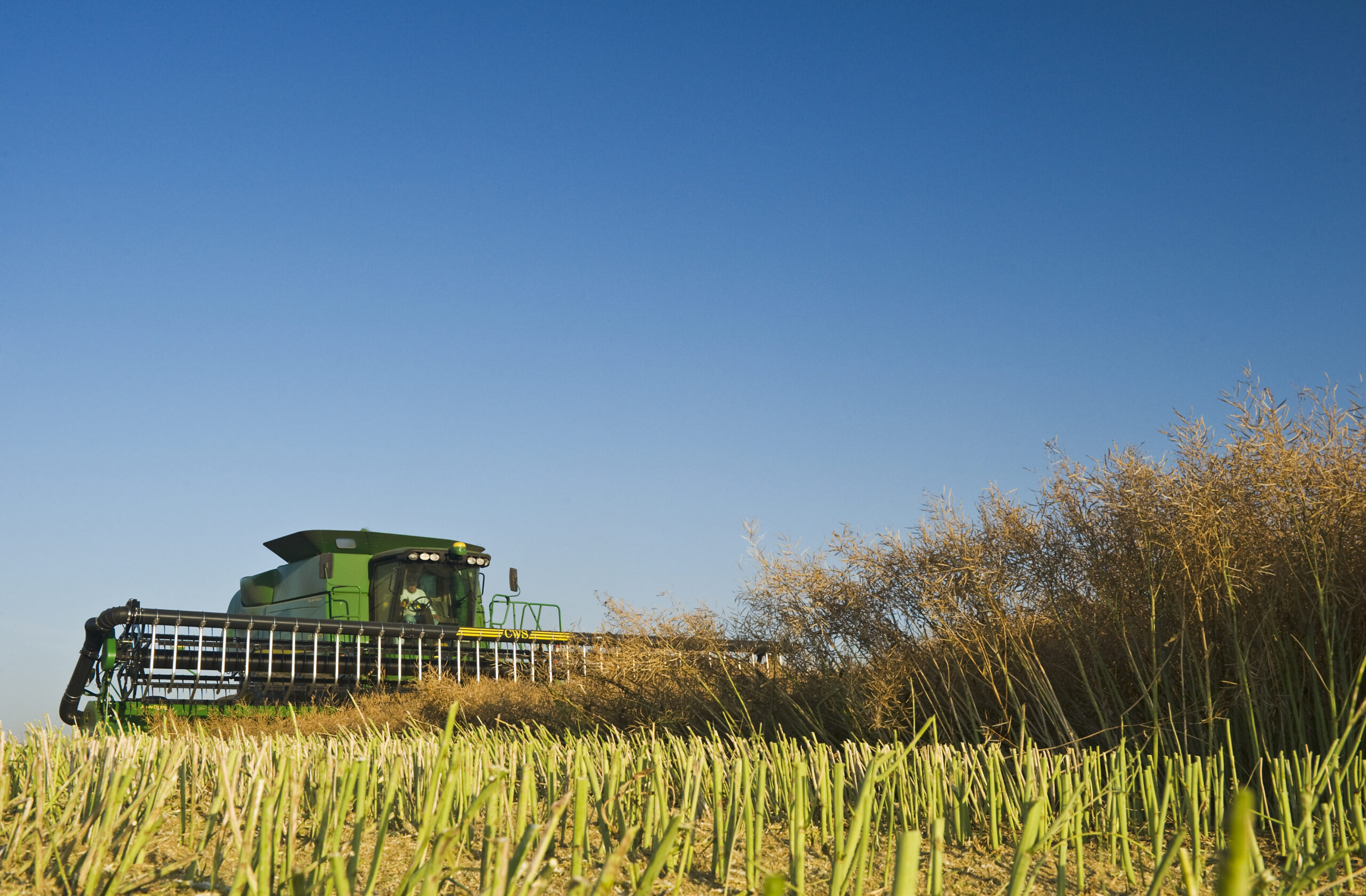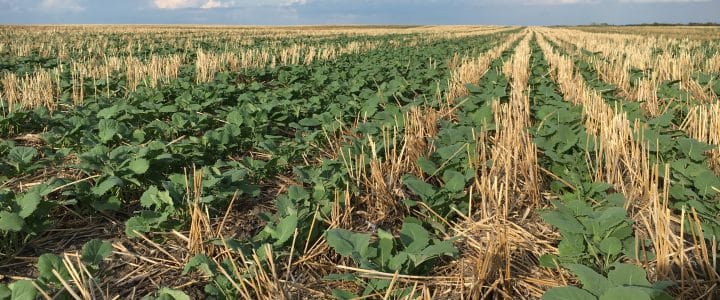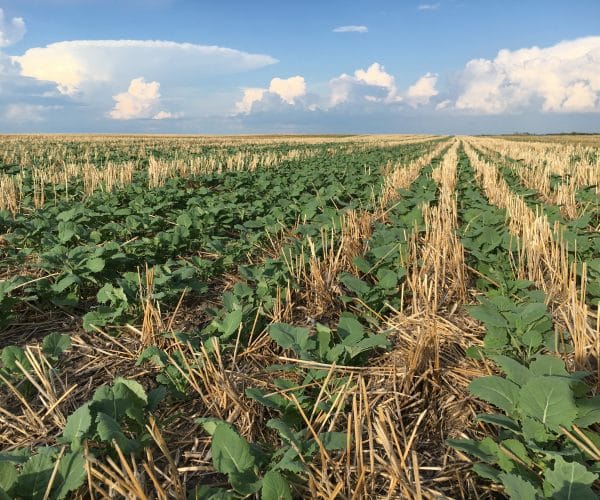The conservation tillage efforts of Canadian farmers, most of them canola farmers, helps Canadian farms use millions of litres less diesel each year.
Less tilling means farmers make fewer passes over the field with tractors and tillage implements, reducing fuel and GHG emissions, and improving soil and water health.
Conservation tillage practices have resulted in 125 to 194 million fewer litres of diesel fuel used on Canadian farms annually1.
Where we’re headed
2025 target:
Use less energy
18% reduction in fuel use/bushel
Our commitment to boosting yields and using land more efficiently will also mean farmers are using less energy to produce each bushel of canola.

Other canola innovations such as pod shatter tolerant seed varieties offer even more fuel savings per bushel.
Because canola seed pods tend to shatter as they ripen, causing seeds to be lost on the ground, farmers have traditionally cut their crop into swaths prior to maturity before putting it through the combine.
Using canola pods that are less likely to shatter prior to harvesting allows farmers to eliminate the swathing step and instead let the crop ripen as it stands in the field and straight combine the crop.
This saves fuel and can increase yields as more seeds reach maturity and end up in the combine instead of being lost on the ground.



